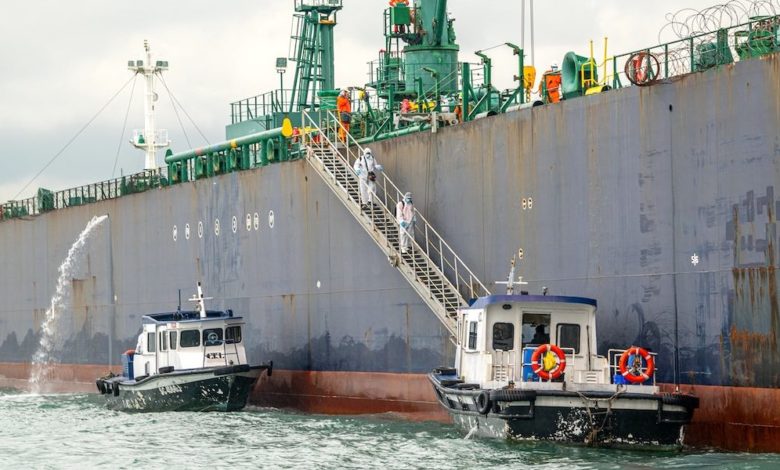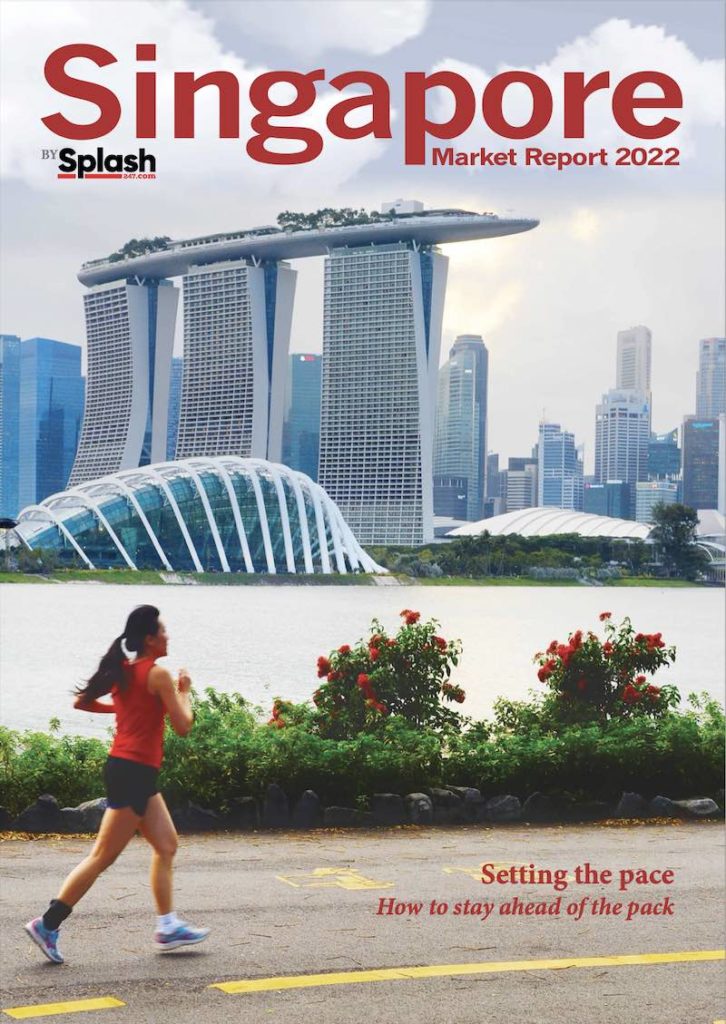Singapore and the lessons learned from the pandemic

How can Singapore keep shipping flowing smoothly in the event of another global health crisis?
September 2022 seems a very far cry from the summer of 2020, a period of time where seafarers were rightly railing against the flip-flapping inaction of many maritime administrations around the world as the crew change crisis became acute.
It might seem a long time ago now, but Singapore came in for repeated flack for its initial ‘cake and eat it’ attitude towards seafarers with many Splash readers hitting out at the republic’s “deliberately obstructive” crew repatriation rules, something that took more than a year to smooth out.
It was not just Singapore – most nations struggled to come up with smooth, well thought out procedures in the first year of the pandemic. It’s telling, however, that in a poll carried by Splash earlier this year, asking readers which port handled the pandemic the best, Singapore came away empty handed.
Singapore is very solution-oriented
At the height of the frustration – back in June 2020 – Kuba Szymanski, secretary-general of InterManager, told Splash: “Singapore and Dubai have always been saying we’re the best hubs in the world, we’ll do anything for you but when the difficult times hit they have proven to be lacking.”
David Borcoski, CEO of ASP Ships Group, tells Splash that the MPA and government should be much “bolder” in a future crisis.
“Singapore could have been a global hub for crew changes during covid and instead the considerable local assets went unused,” he laments.
There are plenty of lessons to be learned for Singapore authorities from the covid crisis from a maritime point of view, specifically seafarers. As such a crucial global hub port, the city is a vital conduit for crew changes.
“Our ability to keep our ports open while keeping our workers and Singapore safe over the pandemic period was only possible due to the strong tripartite partnership between the government, industry and unions,” says Quah Ley Soon, the outgoing chief executive of the Maritime and Port Authority (MPA) of Singapore.
The MPA established the Shipping Tripartite Alliance Resilience Fund (STAR Fund) with the Singapore Shipping Association (SSA), unions and international organisations to ensure that crew changes are conducted safely amongst seafaring nations.
To do this, the first global ground-up tripartite initiative on crew changes developed a CrewSafe audit programme with more than 40 accredited facilities in crew source nations to provide control checks for crew change processes across quarantine, medical, and testing facilities.
The pandemic brought to the forefront the importance of shipping and seafarers, argues Beng Tee Tan, the executive director of the Singapore Maritime Fund.
“We need to continue building on this awareness and to give seafarers due respect and ensure their physical and mental well-being,” she says.
Carl Schou, president and CEO of Singapore-based Wilhelmsen Ship Management, praises the MPA for being proactive and reaching out to the industry at an early stage to find ways to cooperate and find a solution to allow crew changes.
“I don’t think any other country did this – at least so early in the pandemic – and this is what makes Singapore such an attractive place to be. They are very solution-oriented,” Schou says.
Vinay Gupta, managing director of local ship manager Union Marine Management Services (UMMS), reckons that in general Singapore authorities handled the covid crisis “pretty well” and other jurisdictions could learn and follow from them.
“It is no doubt that a crisis so huge would take anyone by surprise and any amount of future planning and preparedness would be tested only in real life scenarios,” Gupta points out.
We’ve learnt well here, which I don’t think is something we can necessarily claim is true of everywhere
Looking from Hong Kong, a city still bedevilled by strict covid protocols, Kishore Rajvanshy, the veteran managing director of Fleet Management, is full of praise for how Singapore handled the pandemic.
“The government implemented concrete steps to ensure that the port remained open and maritime trade never stopped during the major outbreaks,” Rajvanshy relates. These initiatives included contactless cargo, bunkering and delivery options. In addition, remote inspections by class, managers and service providers became the new normal.
Jason Tay, managing partner of local HR firm Direct Search Global, urges owners, managers and regulatory bodies to work together to better manage future crises.
More pressure from shipowners, quick turnaround of crew change, improved quarantine facilities, and better use of port agencies are all on Tay’s list to help with crew change.
Rajesh Unni, CEO of Synergy Marine Group, says that while he would have liked procedures to have moved more swiftly, Singapore was able to mobilise stakeholders in key industries like maritime far quicker than in most jurisdictions.
“The lessons learned about how to effectively manage a pandemic that threatens trade – which is Singapore’s lifeblood – have been well learned here, which I don’t think is something we can necessarily claim is true of everywhere,” Unni says.
From a tech vendors point of view, Morten Lind-Olsen, the CEO of Dualog, reckons the pandemic has been a great boost forward in bringing ship and shore closer.
“In the future,” he says, “all parties can plan and implement solutions based on a fully digital integrated ship.”
Quite so, concurs Henrik Hyldahn, the CEO of ShipServ. “The covid-19 pandemic highlighted – and accelerated – the importance of digitalisation in overcoming challenges related to communications and driving efficiencies, transparency and resilience within the supply chain,” he says.
Joanna Soh, vice president at another maritime tech vendor, i03, says processes must be put in place to ease the impact of future disruptions on crew and their families.
The Ministry of Health should enforce a standard procedure for testing and treatment of crew, Soh suggests. The authorities could pre-assign a handful of hotels dedicated to accommodating seafarers, Soh advises. By doing so, it can mitigate the spread, be quick to execute an isolation exercise, and hence, reduce the need to deny entry to disembarking seafarers.
“Throughout the pandemic, Singaporean authorities collaborated with international authorities and managed to bring the situation locally under control,” relates Dr Shahrin Osman, regional head of maritime advisory for class society DNV. To better manage future crises, Osman says this needs to continue, and the engagement needs to be deepened.
For seafarers, better international collaboration will help establish a standardisation of requirements that crewing management companies need to comply with, the DNV executive suggests.
For seafarers, Osman reckons the biggest challenge has been keeping up with varying vaccination policies, which has disrupted their ability to freely disembark at different ports.
“If the Singaporean authorities are able to ease and affix some of these requirements by working in sync with their international partners, then they can create a greater sense of certainty and stability for seafarers,” Osman concludes.
This is an extract from the Splash Singapore Market Report 2022, which is being distributed across multiple shipping events in the Lion City this week. Splash readers can access the full magazine for free online by clicking here.


thanks for info